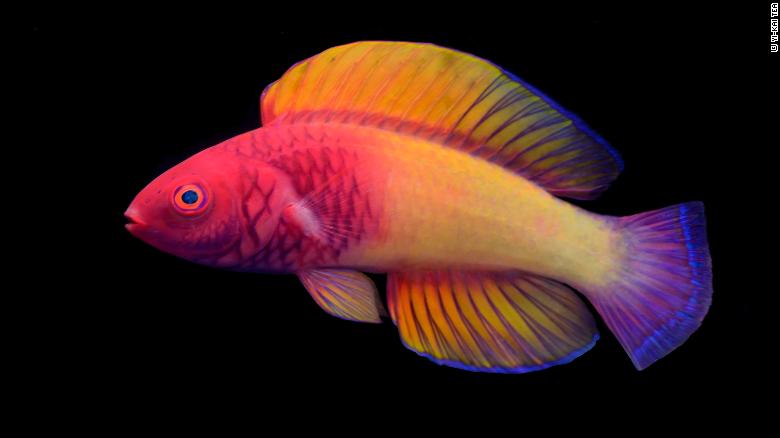
©Yi-Kai Tea via CNN
Vocabulary:
I will read the words, meanings, and sample sentences. Then, repeat after me.
- widespread /WAHYD-SPRED/
- restricted /ri-STRIK-tid/
- distribution /dis-truh-BYOO-shuhn/
- exemplify /ig-ZEM-pluh-fahy/
- compelling /kuhm-PEL-ing/
[adjective] – existing or happening in many places and/or among many people
The widespread flooding lasted for a week.
[adjective] – limited in amount or range
Food supplies were restricted in the community.
[noun] – the process of giving things out to several people, or spreading or supplying something
There has been a delay in the distribution of products.
[verb] – to be or give a typical example of something
The athletes exemplified courage and perseverance during the game.
[adjective] – If a reason, argument, etc. is compelling, it makes you believe it or accept it because it is so strong
The politician’s argument was not compelling enough for the critics.
Article reading:
Please read the whole article. Then, I will check your pronunciation and intonation.
The Maldives is home to the finest beaches and resorts, and a rare rainbow-colored fish called rose-veiled fairy wrasse. The fish, whose scientific name is Cirrhilabrus finifenmaa, was found living at depths ranging from 131 to 229 feet (40 to 70 meters) beneath the ocean’s surface.
Rose-veiled fairy wrasse is the first fish to be described by a Maldivian scientist—Ahmed Najeeb. A study describing the fish can be found in the journal ZooKeys.”It has always been foreign scientists who have described species found in the Maldives without much involvement from local scientists, even those that are endemic to the Maldives,” Najeeb said in a statement. The fish was first found in 1990, but researchers thought it was an adult belonging to Cirrhilabrus rubrisquamis, or the red velvet fairy wrasse. The rose-veiled fairy wrasse adult males bear a unique color pattern of bright magenta, peach, orange-pink, and dark purplish-red.
“What we previously thought was one widespread species of fish, is actually two different species, each with a potentially much more restricted distribution,” said Yi-Kai Tea, a University of Sydney doctoral student, in a statement. “This exemplifies why describing new species, and taxonomy in general, is important for conservation and biodiversity management.” The Maldives Marine Research Institute, together with The California Academy of Sciences, will continue to explore more Maldivian reefs in the future. “Our partnership will help us better understand the unexplored depths of our marine ecosystems and their inhabitants,” Najeeb said. “The more we understand and the more compelling scientific evidence we can gather, the better we can protect them.”
Rose-veiled fairy wrasse is the first fish to be described by a Maldivian scientist—Ahmed Najeeb. A study describing the fish can be found in the journal ZooKeys.”It has always been foreign scientists who have described species found in the Maldives without much involvement from local scientists, even those that are endemic to the Maldives,” Najeeb said in a statement. The fish was first found in 1990, but researchers thought it was an adult belonging to Cirrhilabrus rubrisquamis, or the red velvet fairy wrasse. The rose-veiled fairy wrasse adult males bear a unique color pattern of bright magenta, peach, orange-pink, and dark purplish-red.
“What we previously thought was one widespread species of fish, is actually two different species, each with a potentially much more restricted distribution,” said Yi-Kai Tea, a University of Sydney doctoral student, in a statement. “This exemplifies why describing new species, and taxonomy in general, is important for conservation and biodiversity management.” The Maldives Marine Research Institute, together with The California Academy of Sciences, will continue to explore more Maldivian reefs in the future. “Our partnership will help us better understand the unexplored depths of our marine ecosystems and their inhabitants,” Najeeb said. “The more we understand and the more compelling scientific evidence we can gather, the better we can protect them.”
Discussion Questions:
I will read each question. Then, please answer them.
- When was the last time you were near a body of water? (ocean, sea, lake, river)
- How often do you encounter videos featuring scientific discoveries?
- If you were to name the newly discovered fish, what name would you give it?
- Do you think more people around the world should know about this discovery?
- In your opinion, why is marine research important?
Summarization
Please summarize the whole article using your own words and expressions. You will have one minute to prepare before you answer.
Describe:
Please explain the definition of each word listed below based on your understanding. You can provide example sentences if needed.
- journal
- researcher
- unique
- explore
- protect